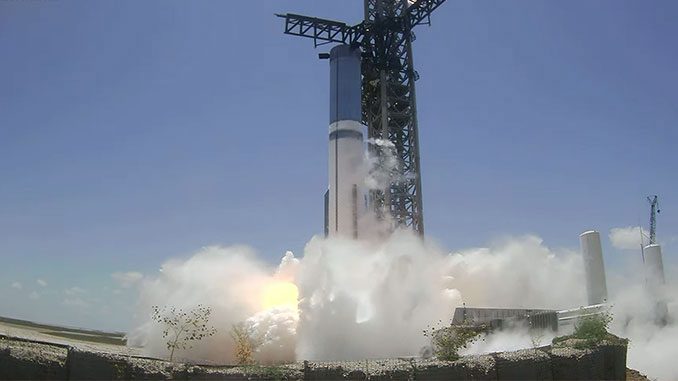The world’s most powerful rocket, Starship, developed by SpaceX, has achieved a significant milestone ahead of its launch into space.
On August 6, the prototype of the Starship’s first stage, known as Booster 9, underwent a static fire test. The Super Heavy propulsion system, equipped with 33 powerful Raptor engines, was activated at the Starbase launch site in Texas, USA.
The testing process was not without its issues, as four of the 33 engines shut down early; however, SpaceX still had plenty of reasons to celebrate.
SpaceX Senior Engineer John Insprucker stated: “I want to extend a warm congratulations to the Starship mission team for passing today’s test. This brings us one step closer to the next test flight.”
The Starship is the most powerful rocket in the world, designed to transport humans and cargo to the Moon, Mars, and other distant planets.

Previously, the rocket’s first test on April 20 ended in failure.
The goal of this plan is to launch Starship to a maximum altitude of approximately 233 km, followed by a return to Earth’s atmosphere about 90 minutes after liftoff.
However, that did not happen; Starship encountered several issues shortly after launch, and SpaceX issued a self-destruct command to prevent it from flying uncontrollably, resulting in the remnants of the rocket resting in the Gulf of Mexico.
The failure was attributed to both stages of the rocket remaining connected, preventing them from separating automatically, which led to a rapid loss of control and ultimately an explosion less than four minutes after launch.
SpaceX representatives emphasized: “We did not expect everything to go perfectly; new rockets often fail during their first test flights, especially since Starship is much more complex than most other rockets.”


















































